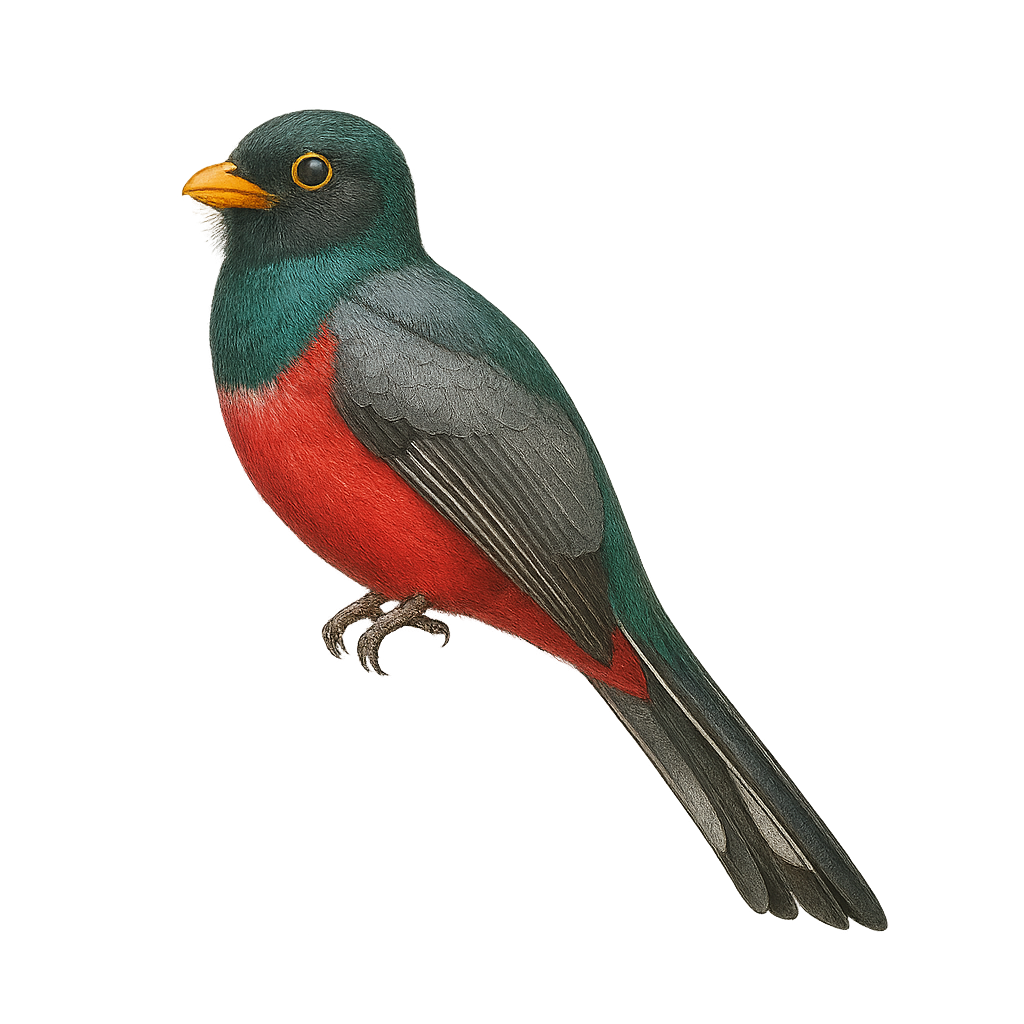Your wildlife photography guide.
Explore the black-tailed trogon in detail, study its behavior, prepare your shots.
Where to observe and photograph the black-tailed trogon in the wild
Learn where and when to spot the black-tailed trogon in the wild, how to identify the species based on distinctive features, and what natural environments it inhabits. The WildlifePhotographer app offers tailored photography tips that reflect the black-tailed trogon’s behavior, helping you capture better wildlife images. Explore the full species profile for key information including description, habitat, active periods, and approach techniques.
Black-tailed Trogon
Scientific name: Trogon melanurus

IUCN Status: Least Concern
Family: TROGONIDAE
Group: Birds
Sensitivity to human approach: Suspicious
Minimum approach distance: 10 m
Courtship display: March to May
Incubation: 16-18 jours
Hatchings: March to June
Habitat:
Tropical forests, humid forests, forest edges
Activity period :
Primarily active during the day, with peak activity in the morning and late afternoon.
Identification and description:
The Black-tailed Trogon, or Trogon melanurus, is a colorful and fascinating bird primarily found in the tropical forests of South America. It is distinguished by its vibrant plumage, with an emerald green back, bright red chest, and characteristic black tail. This bird measures about 28 to 30 cm in length and primarily feeds on insects and fruits. The Black-tailed Trogon is often seen quietly perched on a branch, scanning its surroundings for food. It is known for its soft, melodious song that resonates through the canopy. Although it is relatively tolerant of human presence, it prefers dense habitats where it can easily hide.
Recommended lens:
400 mm – adjust based on distance, desired framing (portrait or habitat), and approach conditions.
Photography tips:
To photograph the Black-tailed Trogon, it is advisable to use a telephoto lens of at least 400mm to capture detailed images without disturbing the bird. Look for areas where natural light filters through the canopy, creating plays of shadow and light that highlight the vibrant colors of its plumage. Be patient and quiet, as although this bird is relatively tolerant, it may fly away if you approach too abruptly.
The WildlifePhotographer App is coming soon!
Be the first to explore the best nature spots, track rutting seasons, log your observations, and observe more wildlife.
Already 1 431 wildlife lovers subscribed worldwide

